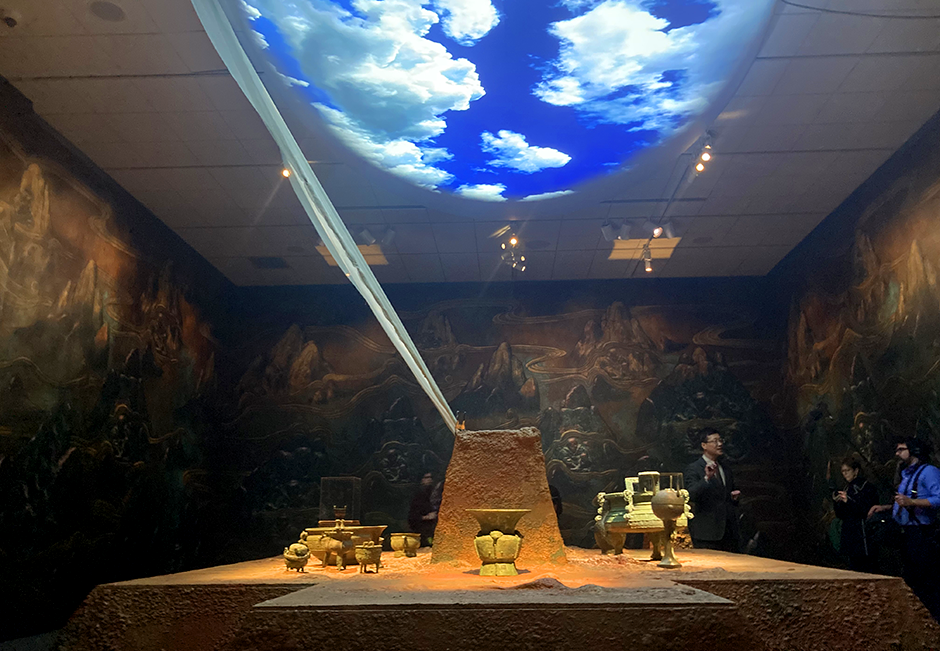Back in 2018, Liu Yang, curator of Chinese art at the Minneapolis Institute of Art (Mia), teamed up with avant-garde theater director Robert Wilson to present the art works from the Qing empire, the last imperial dynasty in China at the museum. That show, “Power and Beauty in China’s Last Dynasty,” cultivated a theatrical experience of objects in Mia’s permanent collection. With sound design and lighting, Wilson created a dynamic experiential exhibition. Going through it almost felt like a performance.

[image_credit]MIA[/image_credit][image_caption]Liu Yang[/image_caption]
The exhibition centers around Mia’s collection of Chinese bronzes, donated to the museum in 1950 by Alfred Pillsbury. “In his spare time, he managed to amass one of the world’s great collections of Chinese arcade bronzes at a time when there wasn’t a single word published about them in English,” says Matthew Welch, Mia’s deputy director and chief curator.
Mia’s collection of 200 Chinese bronzes is one of the nation’s most extensive, with examples from the late Shang to Zhou dynasties, which are on view as part of the show. The bronzes are part of the museum’s collection of over 7,000 works of Chinese art, ranging from Neolithic jades to contemporary works.
Like “Power and Beauty in China’s Last Dynasty,” Mia “Eternal Offerings: Chinese Ritual Bronzes” features a conceptual design by the guest designer, Yip, with curation by Liu, who has a forthcoming book about the collection featured in the exhibition. “He is a remarkable scholar,” Welch says of his Mia colleague. “It’s fair to say he’s one of those remarkable curators who is willing to take risks and be experimental in order to bring this material to life or visitors in unique ways.”

[image_credit]MinnPost photo by Sheila Regan[/image_credit][image_caption]Zun wine vessel in the shape of an owl, 13th-12th century BCE, bronze.[/image_caption]
In most museums, these kinds of objects are displayed in glass cases, which completely divorces them from their original context, according to Liu. “For this show, we really wanted to try to imagine this wonderful collection of ritual bronzes in their original context,” he says.

[image_credit]MIA[/image_credit][image_caption]Tim Yip[/image_caption]
Yip uses heightened lighting and a sound score to evoke a sense of ritual in different settings. “When you walk into the gallery, you will feel that you are walking into a world where art collides with the aesthetics of film, and theater,” Liu says. “Each gallery really embodies one facet of rituals that are performed to honor the ancestral and heavenly deities—- from temple to performance of a ritual to the banquet.”
Take for example the area where footage of the Yellow River is projected on strips of fabric. Visitors walk through the fabric to enter a display of objects used to make offerings to ancestral deities. In another immersive room, visitors are greeted with a view of the sky that seems to look up to the heavens.

[image_credit]MinnPost photo by Sheila Regan[/image_credit][image_caption]Top: Celestial Horse, 1st century CE, bronze with traces of polychrome.[/image_caption]
“Museums never tell the whole story,” Yip says. “I want to bring another angle to seeing this beautiful archive and then attract a different generation of people. I think they have a lot of insight.”
“Eternal Offerings: Chinese Ritual Bronzes” runs through May 21, 2023 at Mia ($20). More information here.







Glad to hear this exhibition is going to be like the Qing Empire exhibition. I was really impressed with that one. It was a really unique way to present an exhibition on objects that are generally just in glass cases (aka boring). I’ll be glad to visit this one as well.